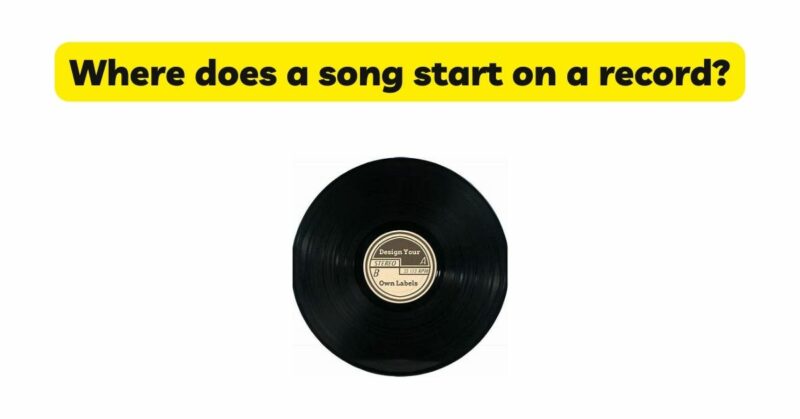Vinyl records have a timeless charm that continues to captivate music enthusiasts. As we place a record on a turntable and prepare for the music to begin, a question may arise: where exactly does a song start on a vinyl record? In this article, we will delve into the intricacies of where a song begins on a vinyl record, unraveling the mechanisms and physical cues that mark the starting point of a musical journey.
- The Structure of a Vinyl Record: To understand where a song starts on a vinyl record, we must first grasp the structure of the record itself. A vinyl record consists of two sides, each containing multiple tracks. The grooves, which hold the audio information, spiral inward from the outer edge towards the center.
- Lead-In Groove: Before the Song: Before the start of each track, a vinyl record has a lead-in groove. This groove serves as a precursor to the actual song, providing space and time for the stylus to find its place and begin tracking the intended track. The lead-in groove typically contains non-musical content or a short segment of silence.
- Groove Separation: Between Tracks: Between each song, there is a distinct groove separation. This separation allows for a clear distinction between the tracks, preventing the stylus from accidentally tracking into the next song. It also serves as a visual marker for the listener to identify the starting point of each track.
- Track Indexing: Visual and Audible Cues: Vinyl records often provide visual and audible cues to indicate the beginning of a song. Visual cues include printed track listings on the record sleeve or label, which specify the order of songs. Audible cues can take the form of a brief pause or a distinctive sound, such as a count-in or an instrumental introduction, signaling the start of a new track.
- Track Length and Groove Density: The position of a song’s start on a vinyl record depends on various factors, including track length and groove density. Longer tracks require more physical space on the record, and thus, their starting point may be closer to the outer edge. Conversely, shorter tracks can be positioned closer to the center of the record.
- Record Labels and Artist Intent: Record labels and artists play a significant role in determining where a song starts on a vinyl record. They carefully curate the sequence of tracks and make decisions regarding the physical placement on the record. These decisions are often based on artistic considerations, such as flow, thematic connections, and desired listening experience.
- Lead-Out Groove: The End of a Side: At the end of each side of a vinyl record, there is a lead-out groove. This groove signals the conclusion of the music on that side and is usually followed by a blank area or etching. The lead-out groove serves as a practical marker for the stylus to lift off the record and helps prevent the stylus from tracking into the label area.
- Changing the Starting Point: Manual Cueing: On a record player, listeners have the ability to manually cue the stylus to a specific starting point on a song. By lifting the tonearm and carefully placing it at a desired position on the record, listeners can choose to start a song from a specific moment, such as skipping an intro or jumping to a favorite section.
- Continuous Mixes and Concept Albums: In some cases, vinyl records feature continuous mixes or concept albums where songs flow seamlessly into one another. In these instances, there may not be distinct lead-in grooves or groove separations between tracks. Instead, the music unfolds as a cohesive unit, blurring the boundaries between individual songs.
- Digital Vinyl Systems (DVS): In recent years, advancements in technology have introduced digital vinyl systems (DVS). These systems allow DJs and music producers to control digital audio files using traditional vinyl records and turntables. In DVS, the starting point of a song can be precisely controlled through software, offering flexibility and creative possibilities.
Conclusion: The starting point of a song on a vinyl record is marked by various physical and auditory cues, including lead-in grooves, groove separations, visual indicators, and audible cues. The placement of a song on the record is influenced by factors such as track length, artistic decisions, and groove density. As we place a vinyl record on a turntable, these cues guide us to the beginning of a musical journey, allowing us to immerse ourselves in the unique and captivating experience that vinyl playback offers.


